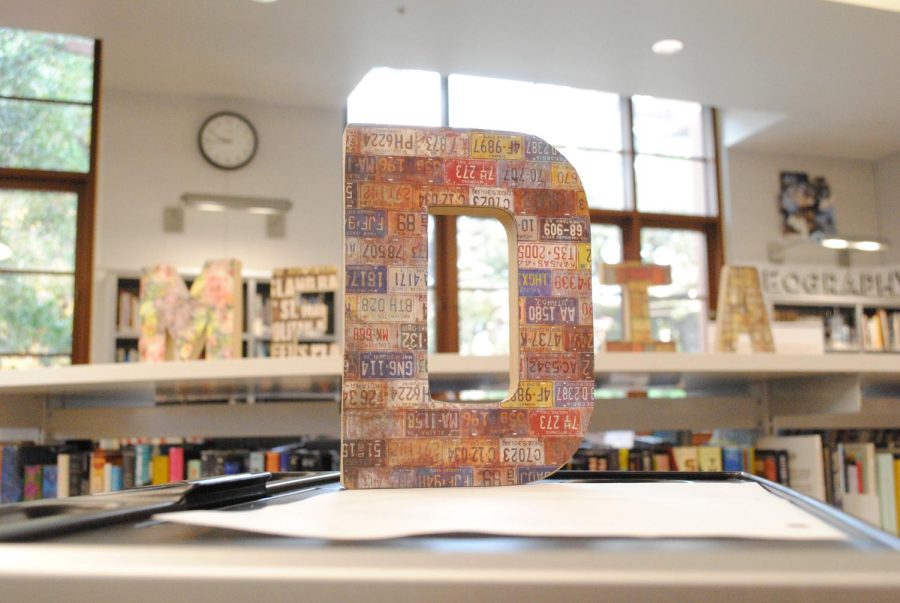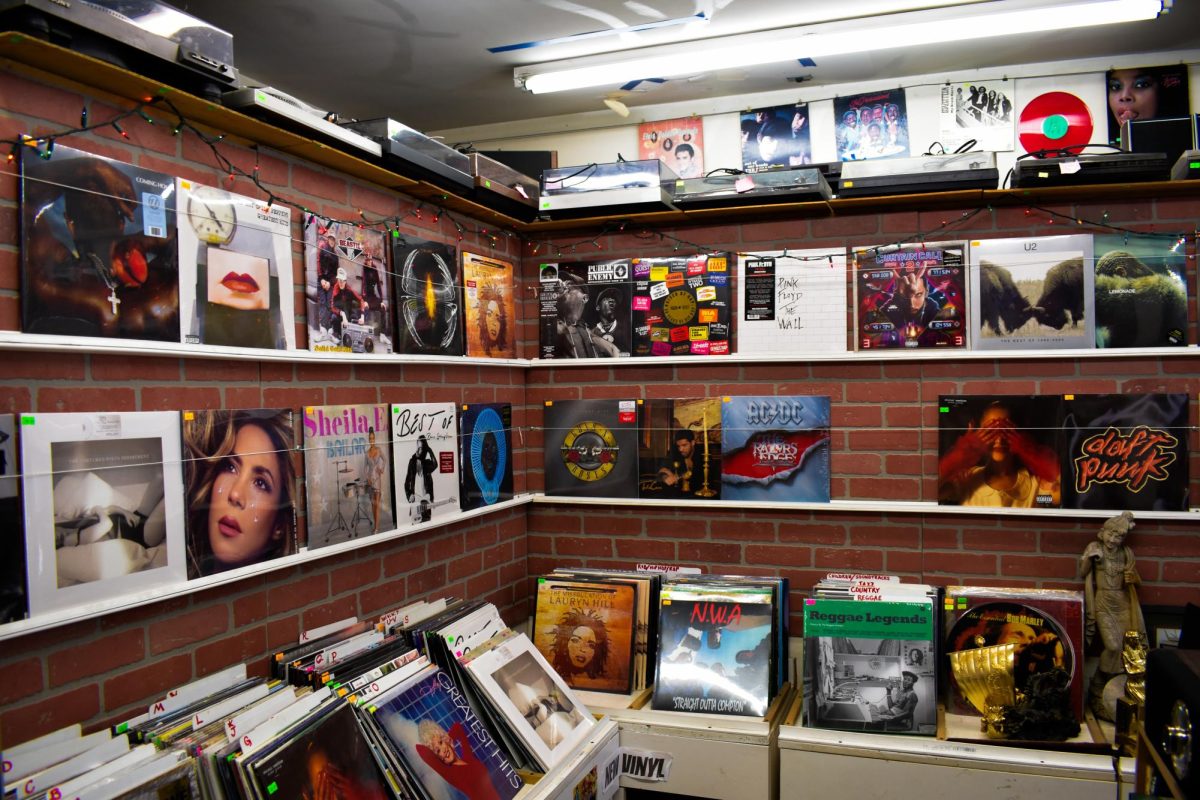Mediating in the Media Center
December 15, 2022
Reading paper books has fallen out of favor for many people in our digital era. With the widespread accessibility of short, stimulating visual media, what seemed like magic in the fifteenth century does not hold up for books today. Libraries worldwide have changed majorly to accommodate for the near-necessity that is internet and computer access.
Sequoia’s Media Center has its own tale of adaptation, and Library Assistant Shannon Schadler shares her experience as a witness to the evolution.
“You couldn’t use your cell phones in [here] at all. Which was a big deal. People didn’t like that.” Schadler said. Technology use was limited inside of the library, and phones weren’t allowed to be used at all. “I was here before Miss Snow came. So there was Mr. Shasky, who was much more of a typical [preservationist] librarian and it was all dark in here, it’s just so much different now.” Schadler said.
 Sequoia’s library used to take a more traditional approach on serving literature, the old style sacrificed the comfort and broad uses of what we know as the Media Center today.
Sequoia’s library used to take a more traditional approach on serving literature, the old style sacrificed the comfort and broad uses of what we know as the Media Center today.
“So it was a very traditional kind of stuffy library. […] Students couldn’t just come in, do puzzles or relax or whatever.” Schadler said.
The phone policies and uncomfortable environment did not resonate as inviting to students, promoting the area as a strict study environment.
Media has been an increasing focus in the Sequoia Facility, and Ms. Snow had the same in her high school years.
“I grew up in the 80s in the Midwest, where that’s just what we called the school library. We called it the Media Center because it included the AV cart, which was the audiovisual cart where people could check out the VCR.“ Library Media Specialist, Ms. Snow said. At Ms. Snow’s high school, the library was called the Media Center because of the audio and visual media included. She would go on to be part of the Sequoia library’s journey to the Media Center.
“So when I came here, in 2016, we were bringing in desktop computers, people were starting to use iPads, people were listening to podcasts. And we wanted to make sure that this was a place where all types of media could be celebrated. […] We celebrate all formats of literacy [here].” Ms. Snow said.
The rise of technical integration sparked the title of Media Center. Many students have found themselves a part of the Media Center community, and some have become Media Center Ambassadors.
“As individuals, we can go directly to Ms. Snow and ask her for advice for anything in general, and we can also use it for our [college] essays later on in our years. If we ever do need help with that, we can go to the media center and they could help us with our essays,” Media Center ambassador Miguel Ortega-Ramierez comments
Schadler describes her experience in pursuit of modernizing the library collection. “We’ve been going through them and trying to decide, if this has not been checked out, if this looks like old information, can we replace it with something that’s more new and interesting and attractive that would have people decide to check it out? And that’s what we wanted.” Schadler says.
The Sequoia Media Center had a large technical integration, starting with the timely arrival of new computers.
“I came from MA where I have been teaching journalism and digital photography. And our Digital Arts Academy was getting new computers so they gave us all those old Macs because I just came from a classroom with all those guys. […] so my arrival coincided with the media center or library, seeing all of that refurbished stuff,” Ms. Snow said.
With the access to many new computers, the Media Center had a glowing era of new features and possibilities. A product of that sadly was the fall in book checkouts.
“One of my goals is to try to get at least one book checked out per day.” Schadler says.
The Media Center still has many people reading, studying, and enjoying the space every day, but books being checked out has become rarer.
“I usually do most of the displays and so it makes me feel good if somebody finds a book and wants to check out something. I also love that we have all these free books that students seem to respond really well to,” Schadler said.
The free book table is a no-risk way for students to dive into something to read. Despite the no fee rule on the Media Center’s checked out books, most students do not invest the time into it.
Some students prefer to read online, as anyone can post their own writing without copyright or publishing concerns. “I use some websites like webtoon for example, I’ve read [there] just because they’re interesting to me, and some you can’t find anywhere else other than online […]” Media Center Ambassador, Miguel Ortega-Ramirez said.
“I would say [online reading is] somewhat a better option. But if you actually like turning the pages, feeling the actual book, then yeah, you go to the actual Media Center or [a] library in general.” Ortega-Ramirez said. Students still find ways to invest themselves into literature, as it is vitally intertwined into our lives in not just books, but shows, movies, comics etc.
“I think it’s very different from a traditional library. I would definitely, I would say, it’s like fifty-fifty, like, there’s media there. But then also there’s like, actual, [physical literature.]” Media Center Ambassador Phoenix Palmerin shares.
The Media Center provides literature in all forms, whether its digital or not, students can enjoy it in the comfort of the Media Center. Although the digital to non-digital balance has not been perfected yet, the space is still an amazing area that helps students everyday.






